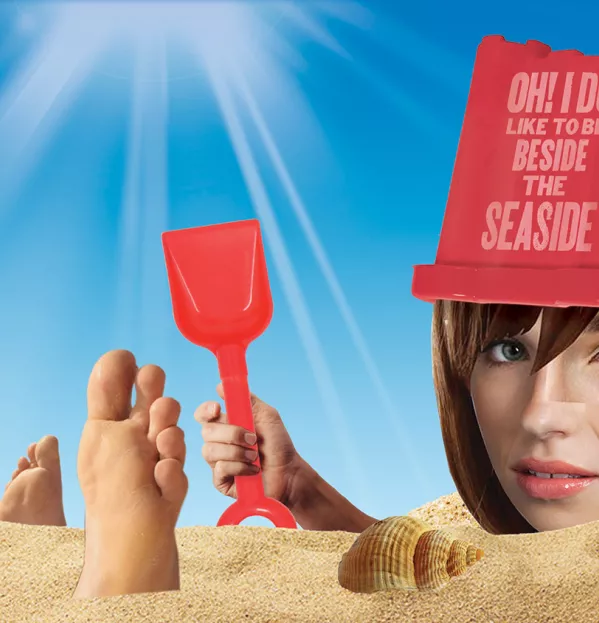We went to the beach this week. Images of serenity often involve beaches - beaches that are invariably composed of perfectly white, soft sand with lapping waves, sunsets, palm trees and a tropical breeze.
While these beaches might be the blueprint for someone’s paradise there’s no escaping the fact that they are no good for sandcastles. For that you need a beach like this one: vast, firm, lightly salted; the sort of beach where families shelter behind windbreaks and the chips are served with gravy.
Luckily, there was no call for windbreaks today. The wind was calm and the sky streaked with white clouds through which the warm (but not too hot) sun broke. If the waves were lapping, they were several miles too far out to hear but none of that detracted from carrying out our core purpose.
Armed with our brand new buckets and spades, we dug in. As any practised sandcastler knows, there are some fundamental techniques which must be followed in the making of a good sandcastle.
Stand where the sand is firm and neither too dry nor too wet. Make sure the inside of the bucket is clean and pack the sand in tightly, pressing down hard. Next, level the top carefully using the back of the spade (adding more sand if necessary). Then lift the bucket high and bring down with confidence in a pre-determined flat area, giving it the all-important tap before lifting the lid on your masterpiece.
And masterpieces they were. Having warmed up with the basic model we began to branch out in our designs. We tried motte and bailey, concentric castles with keeps and battlements, and experimented with different types of turrets. We discovered that if you turned the spade backwards and sliced downwards you could create a staircase leading to the dungeon. We dug moats and used shells as drawbridges. My daughter spent a long time fashioning a swimming pool for the inner courtyard.
I know Ofsted don’t really do sandcastles but I’d have been more than happy to open these ones up for inspection. They could have inspected the building process too. It had everything: from direct instruction to modelling and practising of skills to child-led discovery learning.
We called upon prior knowledge, developed skills, problem solved and worked as a team. We demonstrated growth mindset when a spade snapped and one of the castles got accidentally sat on. There was verbal feedback, moments of awe and wonder and there was even a small plenary when my daughter made us mark them out of 10 (it can’t be easy being a teacher’s child).
Of course, none of this mattered. The buzzwords and teaching fashions, the strategies we evaluate were redundant here. To be honest, from this summer holiday vantage point, I’m not convinced they matter that much in the classroom, either.
In fact, building castles with my kids, sand between our toes, I’m not sure anything else particularly mattered. Not the past and definitely not the future. There’s no point building castles in the air when you’re building them in the sand.
Jo Brighouse is the pseudonym of a primary teacher in the Midlands. She tweets @jo_brighouse
